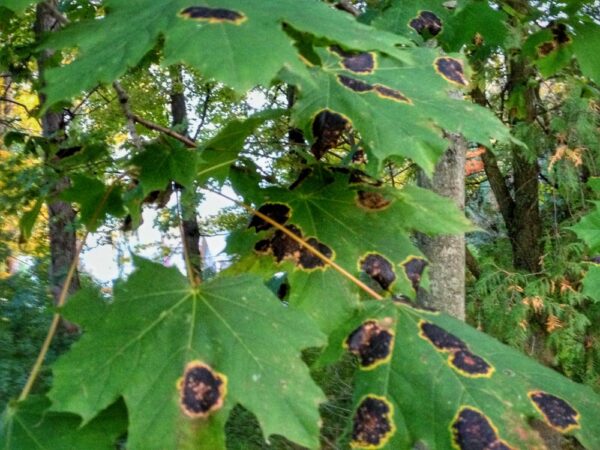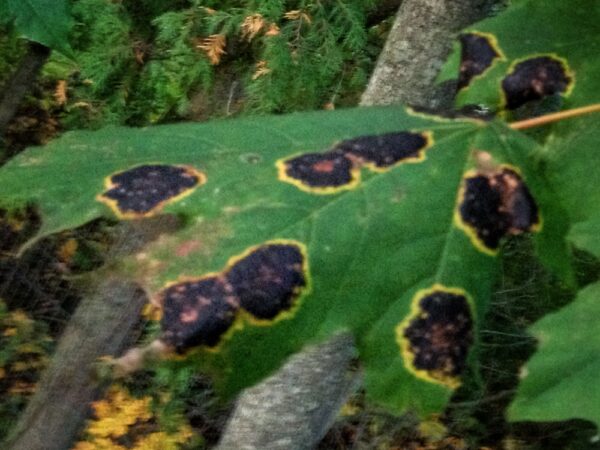Lest you think that life at Rosslyn is all fall fanfare and enchanting parlor light, molting and metamorphosis, this evening I interrupt our regular programming for a markedly less romantic glimpse. I present to you Tar Spot (Rhytisma acerinum) on Norway Maple leaves. Picturesque, right?!

Perhaps not picturesque exactly, but these alarming splotches — that bare an uncanny resemblance to dabs of tar splattered on the Norway maple tree’s leaves — are not as horrific as the might initially seem.
Rhytisma acerinum is a plant pathogen that commonly affects sycamores and maples in late summer and autumn, causing tar spot. Tar spot does not usually have an adverse effect on the trees’ long-term health. R. acerinum is… cosmetic and is therefore usually controlled only with sanitation methods. In late spring, chlorotic spots appear on tree leaves. These develop into brown-black lesions, retaining the yellow border. The lesions continue to grow, and by the end of summer form leaf spots that look like tar. (Source: Wikipedia)
Tarry leaf spots. Yuck!

But not nearly so alarming as they initially seem. Even a bit Halloweenie, perhaps? 
When you discover that your tree is suffering from tar spot of maples, you may start to fear that it spells the end to beautiful fall scenery forever. Never fear, maple tree tar spot is a very minor disease of maple trees and you’ll have plenty of fiery falls to come… the fungus only attacks the leaves, leaving the rest of your maple tree alone. The black spots are fairly unsightly, but they don’t do any harm to your trees and will be shed when the leaves fall. (Source: Gardening Know How)
So, as holistic gardeners, we rest assured that there’s little we can/should do except eliminate these leaves when they fall (with hopes of minimizing any further propagation of the spores) and, well, pen a few verses, of course!
Tar Rot Poem
The Norway Maple
bears black blemishes
on chlorotic leaves,
tarry splotches
dark as October night.
Fungus, oh, fungus
among’us tonight,
is it your plight or
eerie trick-or-treat?
Boo. Boo! But fear not.
It is Rhytisma
acerinum, a
Halloween costume,
bold and alarming,
but benign, short lived,
and shed soon as fall
dries and disrobes me.
What do you think?